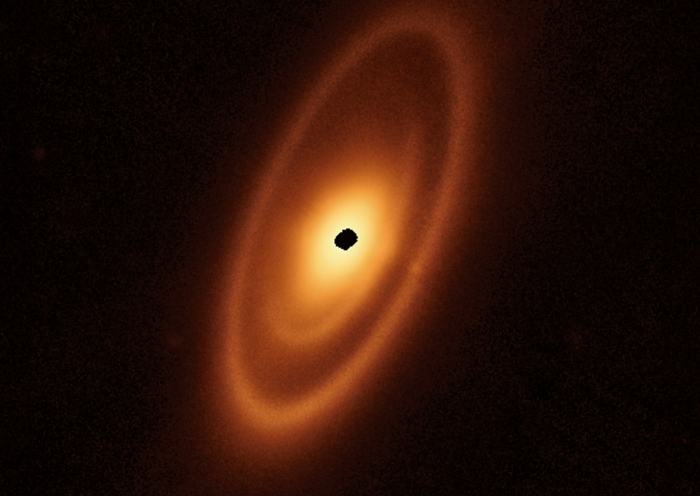Nasa’s James Webb telescope looks at asteroid belt outside our solar system – and finds surprise
Fomalhaut asteroid belt is far more complex than researchers had realised

Your support helps us to tell the story
From reproductive rights to climate change to Big Tech, The Independent is on the ground when the story is developing. Whether it's investigating the financials of Elon Musk's pro-Trump PAC or producing our latest documentary, 'The A Word', which shines a light on the American women fighting for reproductive rights, we know how important it is to parse out the facts from the messaging.
At such a critical moment in US history, we need reporters on the ground. Your donation allows us to keep sending journalists to speak to both sides of the story.
The Independent is trusted by Americans across the entire political spectrum. And unlike many other quality news outlets, we choose not to lock Americans out of our reporting and analysis with paywalls. We believe quality journalism should be available to everyone, paid for by those who can afford it.
Your support makes all the difference.Nasa’s James Webb Space Telescope has spotted a surprise in a distant asteroid belt.
Researchers were using the advanced telescope to try and examine Fomalhaut, a nearby young star that is encircled by its own asteroid belt, similar to ours.
They took detailed pictures that give us an indication of what early planetary systems might look like. The pictures could even help us tell the story of how our own solar system came about.
“I would describe Fomalhaut as the archetype of debris disks found elsewhere in our galaxy, because it has components similar to those we have in our own planetary system,” said András Gáspár of the University of Arizona in Tucson and lead author on a paper describing the findings.
“By looking at the patterns in these rings, we can actually start to make a little sketch of what a planetary system ought to look like – If we could actually take a deep enough picture to see the suspected planets.”
But they also found that the rings were more complex than they had previously thought. There are three nested belts that stretch out 14 billion miles from their star, meaning that the outermost belt is double the distance of our own solar system’s Kuiper belt.
Though previous observations from Hubble and other telescopes have been able to take sharp images of that distant belt, researchers had not been able to see its structure. Now, with the addition of infrared imagery, researchers can see the belts as they glow.
“Where Webb really excels is that we’re able to physically resolve the thermal glow from dust in those inner regions. So you can see inner belts that we could never see before,” said Schuyler Wolff, another member of the team at the University of Arizona, in a statement.
Those findings are already leading researchers to speculate about what else there might be waiting to be discovered around that star. The lack of planets in the belts around Fomalhaut is a mystery, and scientists believe there may be some interesting planetary system lurking there.
The new findings suggest that the belts around the planetary system are built by the gravitational forces of those planets, that are hidden from view even in the new images.
“We definitely didn’t expect the more complex structure with the second intermediate belt and then the broader asteroid belt,” said Wolff. “That structure is very exciting because any time an astronomer sees a gap and rings in a disk, they say, ‘There could be an embedded planet shaping the rings!’”
The findings are described in a new paper, ‘Spatially resolved imaging of the inner Fomalhaut disk using JWST/MIRI’, published in the journal Nature Astronomy.
Join our commenting forum
Join thought-provoking conversations, follow other Independent readers and see their replies
Comments